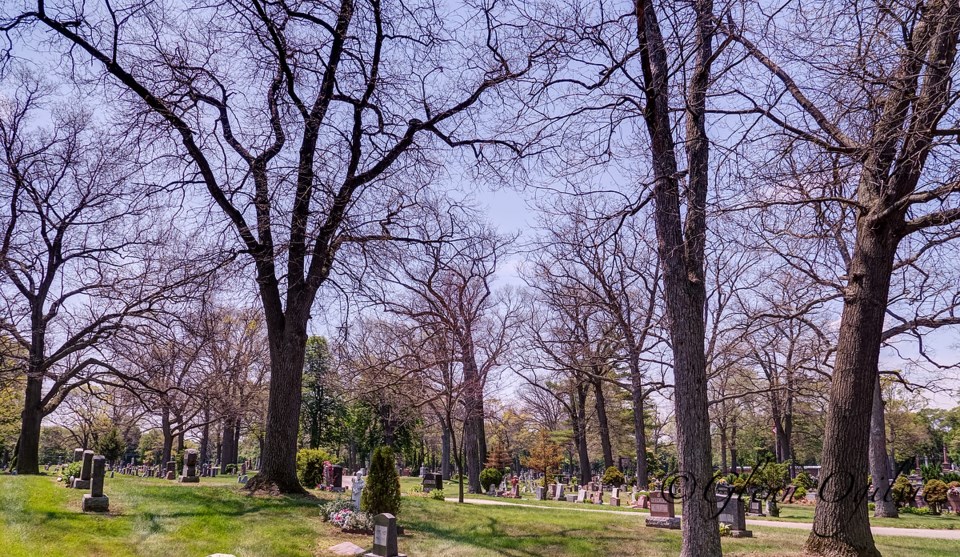Journal Staff
Pockets of the city have been hit hard by an infestation of gypsy moth caterpillars this year, and nowhere more so than at Our Lady of Mercy Cemetery.
As many as 60 mature hardwood trees on the Michigan Avenue cemetery were stripped bare of their leaves in a matter of days, said site general manager Rosario Muscedere.
“I’ve been with the cemeteries for 28 years and I’ve never seen anything like this.”
With the canopy eaten and their bellies full, the caterpillars are now pupating in untold numbers on the trees, grounds and memorials.
“They can be rather unsightly,” Muscedere said. “It can be kind of disturbing at times.”
Similar scenes of defoliation have played out here and there across the city in recent weeks, said Mike Raaymaker, arborist and owner of Guardian Tree Service.
The invasive caterpillar, which is native to Europe and Asia, attack many species of trees but in Sarnia are primarily targeting oaks.
During outbreak years trees can be completely defoliated as caterpillar droppings, or “frass,” rain down from above.
Usually a stripped tree bounces back and the damage isn’t permanent, Raaymaker said.
“It’s more of a nuisance,” he said, adding it can take three or four successive years of infestation to kill the tree.
One north-end property owner said gypsy moth caterpillars are so thick and messy it’s been impossible to enjoy outdoor life this summer. He urged city council on July 8 to address the mess.
Some municipalities use pesticide sprays but Sarnia doesn’t have a formal combat plan.
“This pest generally runs in cycles with two years of light infestation with minimal defoliation, and then a year or two of moderate to heavy infestation, and then a population collapse,” said parks and recreation director Rob Harwood.
An amateur scientist deliberately imported gypsy moths to the Boston area in 1869 to start a silk industry. They escaped and and continue to spread.
